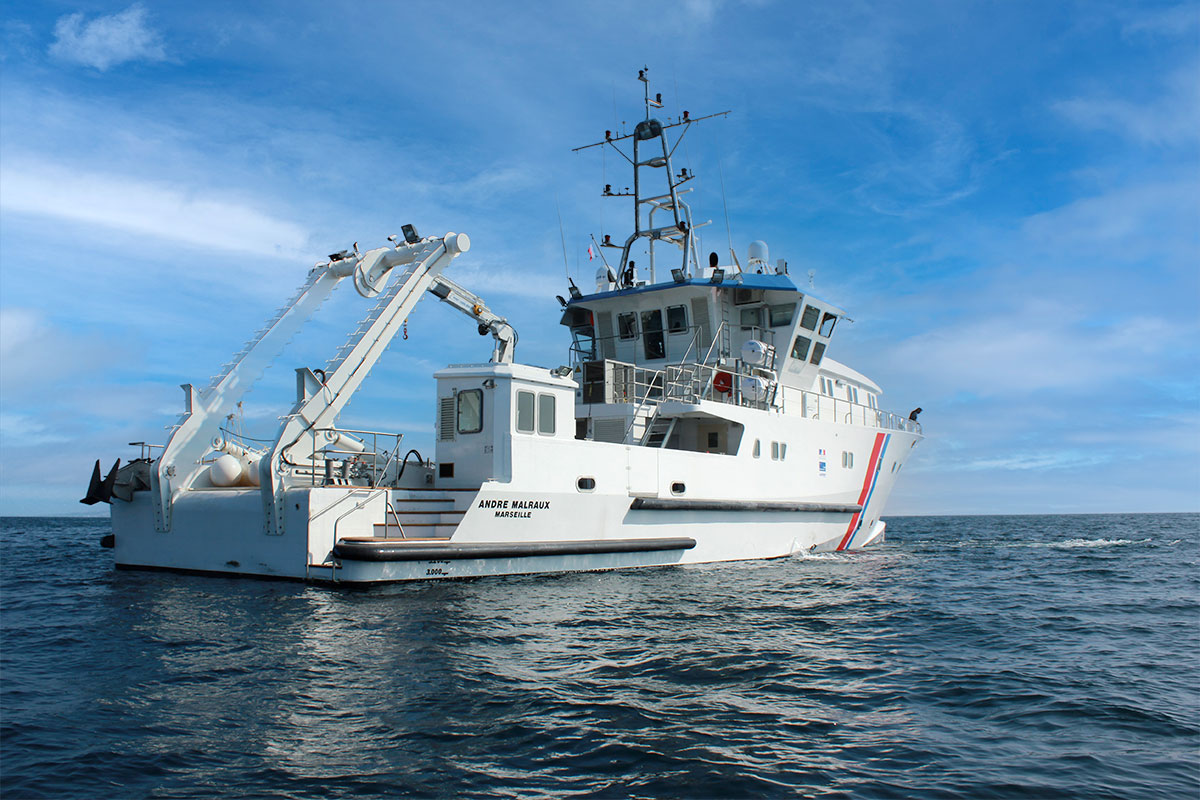Launched in 2012 at iXblue Shipyard location, in La Ciotat, France, the “André Malraux” is one of two vessels built by iXblue and owned by the DRASSM. This 36-metre Multipurpose Research Vessel, with more than 70 sqm of work areas, can welcome up to 40 crew members, scientists and divers for surveys up to 8 days. Her mission is to act as a support for human or robotic diving operations in the frame of underwater archeological researches. Made of composite material, which does not rust, is easy to fix, and provides an unrivaled cost of ownership, the “André Malraux” is propelled by a diesel-electric engine. This versatile survey vessel sails about 160 days per year and has become iconic among the profession. The ship integrates Echoes 10 000, iXblue’s ultra-high-resolution sub-bottom profiler, designed for shallow water environment. Coupled to a magnetometer, it can detect buried anomalies in the sediments. The vessel also includes, Gaps, iXblue’s USBL system, which position the sonar, the magnetometer and the ROV, while the Octans, iXblue’s gyrocompass, counterbalances the multi-beam echosounder’s movement. Delph Suite, iXblue seabed mapping software, is also on board the “André Malraux”. It combines an advanced 3D cartographic visualization feature with smart and fast tools for processing, mapping and interpreting data from the sonar, the sub-bottom profiler and the magnetometer and thus facilitates the search for seabed anomalies, which could lead to both shipwrecks.




